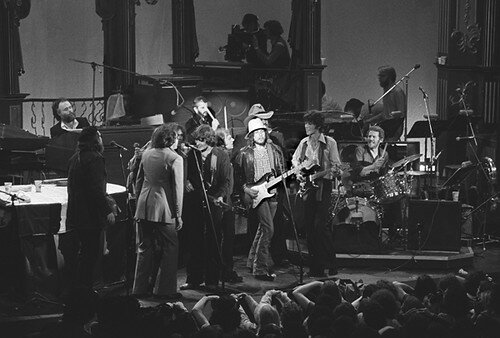When I say Canadian music originated in the American South, I don’t mean that Canadian musicians were influenced by Elvis Presley, Nat King Cole, and Johnny Cash like everyone else. I mean that Americans had to midwife Canadian music into existence.
Before the Arkansas-born Ronnie “The Hawk” Hawkins moved northward and took up residence, Canadian music was the domain of a few knockoff groups like The Four Lads who somehow managed to chart in the USA and the occasional genius like jazz legend Oscar Peterson. This is a story we’ve heard before: very talented, or very lucky, Canadian makes it big in the States through sheer force of will or being in the right place at the right time. But homegrown Canadian music? The idea seems to never have occurred to anyone.
Indeed, as we’ll see, all the great Canadian musicians of this era – Gordon Lightfoot, Joni Mitchell, Neil Young – owe a great deal to sympathetic American mentors and the established industry from whence they came. If they had stuck to touring local clubs and church basements, we might have never heard of them.
For his part, Hawkins spent his early years unremarkably covering swamp-rock standards like “Susie Q.” He’d gotten the idea to move to Canada after a few successful tours up there and his band, the Hawks, were unwilling to follow. Once he got to Canada, Hawkins had his pick of the local talent, and soon the new Hawks were comprised of four Canadians and two Americans. Eventually the talent Hawkins assembled broke out on their own, and soon ended up as the opening band for Bob Dylan himself. This is where they got the name they’d be remembered for: “The Band.”
In the broader history of music, The Band are definitely in the conversation for most influential outfit of the 60s and 70s. Every group of artsy, bearded, genre-blending hipster musicians from the past 50 years owes a debt to them. Scorsese immortalized their farewell concert in “The Last Waltz”. If your favourite mouldy oldie features an extended bout of psychedelic organ, that organist was consciously measuring himself against Gareth Hudson’s keyboard wizardry. Perhaps most incredible was the fact that nobody asked what business a bunch of Canadians (and one American) had singing about getting drunk up on Cripple Creek and the night they drove old Dixie down.
50 years later, however, Canadian music is still captivated by The Band. A “Canadian group” must:
-be comprised of at least 3 but no more than 5 (mostly) white dudes
-feature nigh-incomprehensible Dylan-esque lyrics
-have a name, like “The Band”, that is somehow “deep” and generic at the same time
-sound like they just stepped out of Red State country
-and, though this mercifully isn’t as common anymore, noodle away on an organ for minutes at a time. (The following song was released in 1980.)
Most importantly, official Canadian music- which was known for a time as “Can-Rock” -has very little time for punk, new wave, hip hop, or any other such modern heresies. Southern butt-rockers 3 Doors Down have a better chance of being mistaken for a Canadian group than Oscar Peterson, the jazz maestro who we’ll cover next week.
****
Photo by dgans 



Comments